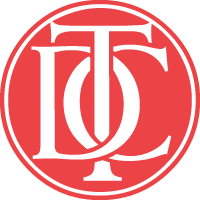Nicolas Jenson’s Typographic Contributions
by Alex W. White
Editor’s Note This article is excerpted from the original, which appeared in the Digital Type Review. White is the past-Chairman of the TDC and author of the Second Edition of The Elements of Graphic Design (2010, Allworth Press), and Advertising Design and Typography (2007, Allworth Press).
Nicolas Jenson was born in France in 1420. In 1458, when he was 38, Jenson worked as an engraver at one of France’s mints. Charles VII sent him to Mainz to study the new art of movable-type printing, which was styled after the region’s Blackletter (fig.1). In 1450, Johannes Gutenberg had perfected movable type in Mainz after developing his ideas in Strassburg. His 42-Line Bible initiated the Incunabula – or “Cradle” – the term for the first fifty years of movable-type printing. But when invaders sacked Mainz in 1462, most of the printers left the city, helping spread movable-type printing throughout Europe. By 1500, printing and typecasting grew to 1,000 printers working in about 200 locations throughout Europe. Collectively, they produced nearly 35,000 works.
.
In 1468, Jenson moved to Venice, one of the most active trading centers in Europe, and opened that city’s second printery. Following the lead of Johannes de Spira (fig.2), a transplanted German who had secured a printing monopoly from the town elders, Jenson designed his own Venetian typeface (fig.3) based on local manuscript handwriting for his first book, Eusebius’s De Praeparatione Evangelica. Rather than perfecting the beauty of individual characters, Jenson set out to create an even typographic color in multiple lines of type. His interest was equally in the spaces within and surrounding the letters as in the letter shapes themselves. Jenson and de Spira mark the first “roman” typefaces and the beginning of the gradual 100-year shift away from Gothic to humanistic, or roman, typeface use across Europe. Jenson died in 1480.
.
Jenson’s type has been used continuously since its design in 1470: it has proven its worthiness through many interpretations. Some of Jenson’s offspring are Golden (Morris, 1890), Kennerly (Goudy, 1911), Cloister Old Style (Benton, 1913), Centaur (Rogers, 1915), and Berkeley Oldstyle (Goudy, 1938) (fig.4).
.
With regard to his work developing Golden, named because of its first use in printing his book The Golden Legend in 1892, William Morris wrote, “I began by getting myself a fount of Roman type. And here what I wanted was letter pure in form; severe, without needless excrescences; solid, without the thickening and thinning of the line, which is the essential fault of the ordinary modern type, and which makes it dif?cult to read; and not compressed laterally, as all later type has grown to be, owing to commercial exigencies. There was only one source from which to take examples of this perfected Roman type, to wit, the works of the great Venetian printers of the ?fteenth century, of whom Nicholas Jenson produced the completest and most Roman characters… (fig.5: Jenson above, Golden below). This type I studied with much care, getting it photographed to a big scale, and drawing it over many times before I began designing my own letter.”
.
Ronald Mansbridge, the director of the US office of the Cambridge University Press, recalls “Bruce Rogers used to maintain that he did not design Centaur, but just adapted it from Jenson’s original (fig.6: Jenson above, Centaur below). This was over modest; virtually all types must inescapably owe something to previous models. In reviewing Centaur for The Fleuron, Stanley Morison wrote of its ‘unique grace’ and ‘the farther Mr Rogers draws away from Jenson, the nearer he draws to our ideal face.’” Evidently, Morison didn’t fully admire Jenson’s work.
.
In addition to Adobe Jenson, a Multiple Master font by Robert Slimbach, two releases add to the availability of Jenson’s Renaissance letterforms, chief among them ITC’s Legacy and Jim Spiece’s Nicolas Jenson. ITC Legacy has itc’s familiar enlarged x-height which makes it more legible, but less faithful. It also has fewer eccentricities of Jenson’s original design. In short, it is a cleaned-up version. Spiece’s Nicolas Jenson has a much smaller x-height – you might consider increasing the point size a bit to compensate – but it retains all the wiggliness and slight variations of Jenson’s original handcrafted metal letterforms.
Both typefaces come with extensive variations: Legacy has nine fonts (plus a full sans serif family!), Nicolas Jenson has ten (fig.7) Regular and Bold weights alone, plus Mediums and Extra Bolds. Certainly, neither Legacy nor Nicolas Jenson will remotely limit one’s typographic options, though the choices may put off those who do not have an historical understanding of the use and purpose of the various alternative flavors.
.
Clifford Burke, writing in The Fount, discusses the usefulness of a full range of weights and variations of a typeface. “When you start playing around on the keyboard with Caslon 337 you’ll discover a rich resource, especially in the excellent italic, with its extensive array of swash characters in both the caps and the lowercase. A true small cap font, the full range of ligatures and access to both styles of figures really put the fun back into typographic play.” “The primary pleasure of working with a fully extended font is that the visual matrix of a text can be constructed from type elements alone, without having to include illustrations or dingbats or unfortunate gimmick… Sometimes, especially in literary work, a text is just a text, but it nevertheless wants more exciting visual treatment than merely words on paper. With a fully extended font the typographer can manipulate the visual appearance of a piece of writing without ever adding anything to the words themselves. Just remember that swash caps are pretty powerful, visually, and they can be easily overused.”
Jim Spiece, who designed Nicolas Jenson and over eighty other fonts, most for display use, says he started by thoroughly researching original source material (fig.8: Nicolas Jenson left, Jenson’s Eusebius center, Legacy right). None of Jenson’s metal punches, matrices, or cast type exists today. All designs that interpret Jenson’s typeface must rely only on printed samples. In addition to these, Spiece used Ludlow’s Eusebius, designed in 1923 by Ernst Detterer and initially named Nicolas Jenson, later renamed in a re-release in 1941 to honor Jenson’s first published book in which he used his typeface.
.
In a phone conversation I had with Spiece, he said Nicolas Jenson began with the thought, “What would happen if I made a font with enormous variety?” Such expansive (and expensive) fonts families, he says, must be built gradually as a designer’s need and experimentation requires.
The only criticism I have of Spiece’s Nicolas Jenson, which is a magnificent undertaking, is that the wordspacing seems too open. Wordspacing, like letterspacing, should be invisible, that is, it should not draw any attention to itself. There should be enough spacing to separate words from each other, but not so much that you notice pauses between words. It is a balancing act between the legibility of each word-thought and the integrity of the lines of type. Spiece says that the wordspacing of Nicolas Jenson is true to Jenson’s original, and I appreciate the authenticity. It is, of course, my prerogative to tweak the word spacing to suit my taste.
In comparison, ITC Legacy was born in the early 1960’s when Ronald Arnholm was a graduate student at Yale University. His graduate thesis was the creation of Jenson Roman, which became a Linotype offering. About twenty years later, Arnholm recognized a number of design decisions he had made at Yale that deserved another visit. Arnholm travelled to the Emory University Special Collection in Atlanta and studied original printings of Jenson’s 1470 Eusebius. Arnholm essentially redrew the entire Jenson Roman font and then expanded the face to include Book, Medium, Bold and Ultra weights. itc released the Legacy family in 1993.
Jenson’s highly readable letterforms can be used to evoke a nostalgic look or as grist for a more modern, abstract take on letter-forms. For example, shown are samples from a freshman exercise I have given (fig.9) that reorganizes the accurately-drawn negative spaces into new characters that make an expressive set of initial caps. This project helps designers recognize negative space, the particularities of letterforms, and the value of exploring and managing abstraction. The exercise is aided by using relatively simple, classic characters. In this regard, Jenson’s letterforms are ideal.
.
SOURCES
An Atlas of Typeforms, Sutton and Bartram: 1988, Chartwell Books
The Elements of Graphic Design, 2nd ed., Alex W. White: 2010, Allworth Press
A History of Graphic Design, 2nd ed., Meggs: 1992, VNR
ITC Masterworks: ITC Golden Type brochure
Letters, Hutchinson: 1983, VNR
Printing Types, Lawson and Agner: 1990, Beacon Press
Types Best Remembered/Types Best Forgotten, Robert Norton, editor: 1993, Parsimony Press










